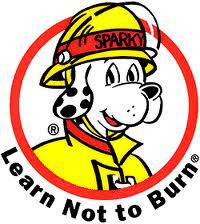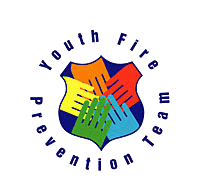Fire Educational Programs and Campaigns
Fire Educational Programs and Campaigns
Older & Wiser Program 
When it comes to fire safety, older adults need our help more than any other group. Statistics show us that adults over the age of 65 are at the greatest risk of dying in a fire. Although most older adults continue to live independent, productive lives, the natural aging process can make them particularly vulnerable to fire. Common fire risks for older adults include careless smoking, careless cooking and improper placement of space heaters.
“Older and Wiser” is designed to assist the fire service, community groups, home support workers, families, friends and the media in educating older adults about fire safety.
Learn Not to Burn Program®

The Learn not to Burn Program takes into account what children need to know about fire and burn prevention and it teaches them in a positive, non-threatening way.
For more than 20 years, Learn Not to Burn® (LNTB) has been the theme and focus of NFPA‘s comprehensive public fire safety education initiatives. Based on NFPA‘s belief that fire safety information should be presented in a positive, non-threatening manner, LNTB teaches people of all ages how to make responsible choices regarding health and safety.
Children in preschool through eighth grade can receive critical life safety skills through the following LNTB education materials:
-
The LNTB Curriculum, first released in 1979, teaches 22 key fire safety behaviors and is organized in three learning levels. The curriculum is intended for use by individual classroom teachers in planning classroom activities and can be re-used from year to year.
-
The LNTB Resource Books are a grade-based alternative to the LNTB Curriculum. This four-volume program teaches children in kindergarten through grade three 14 basic fire safety behaviors over a four-year period. Each lesson includes background fire safety information for teachers, discussion points, and reproducible activity sheets that can be integrated into classroom subjects such as language arts, math, art, health/safety and science. Also included are evaluation forms to test students‘ fire safety knowledge both before and after the new program has been implemented.
Youth Firesetters Program
The Youth Firesetter Program is an awareness program designed to promote/foster attitudes and behaviors that will result in  good fire safety practices.
good fire safety practices.
For most children, fireplay is the result of a normal curiosity about fire. They do not understand or know how to handle fire properly. For some, however, fireplay is a symptom of other problems. This program will help to determine why a particular child is involved in pre-setting and depending upon the assessment, provide for the appropriate treatment and follow-up.
The goal of the Youth Firesetter Program is:
-
To help reduce the number of fires, injuries and loss of life and property that is caused by youth fire setters.
-
Through the assessment, the program will be able to distinguish between firesetters who exhibit a normal curiosity about fire and those who may have a serious mental health problem of which setting fires is a symptom.
-
To use education as the number one tool to help reduce youth firesetting.
-
To ensure that all children in the program receive fire safety education.
- Depending on the results of the assessments, to refer some children to mental health professionals for treatment.
Fire Marshal
Ph.732.681.3700 x 239 ~ Fx.732.681.3434




